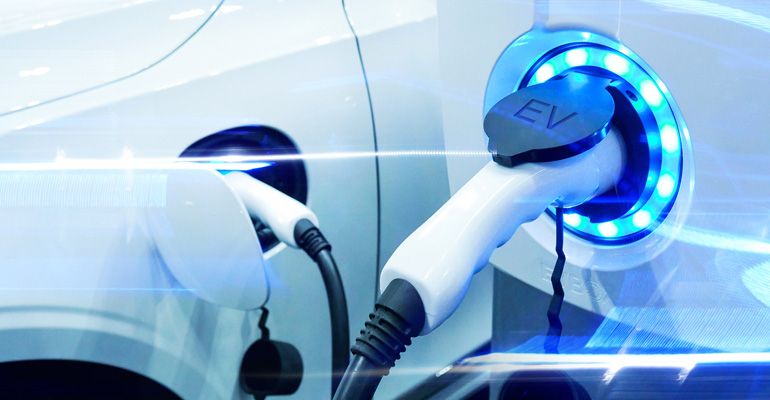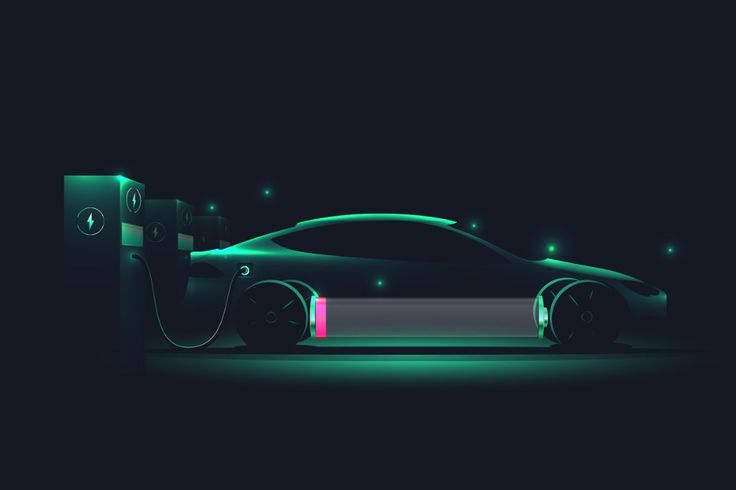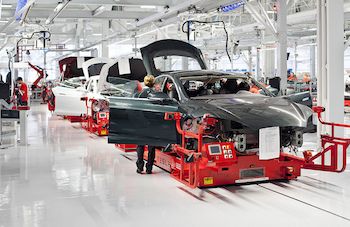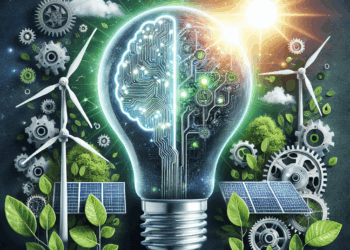The global shift toward electric vehicles (EVs) is reshaping the automotive landscape, driving unprecedented expansion in manufacturing sectors worldwide. As governments enact stringent emissions regulations and consumers embrace cleaner mobility, automakers and suppliers are investing heavily in EV production facilities, battery plants, and component ecosystems. This transformation extends far beyond the vehicle assembly line—stimulating growth in raw materials mining, electronics, software development, and even energy infrastructure. In this comprehensive article, we explore how electric vehicles are fueling manufacturing growth, the technological innovations underpinning this surge, the economic and environmental implications, and the policies that accelerate or hinder progress.
A. Global EV Market Overview
The momentum behind EV adoption has accelerated in recent years, with sales rising from under 1 million units in 2017 to over 14 million in 2023. Several factors contribute to this rapid growth:
A. Consumer Demand: Shifting public sentiment toward sustainability and lower operating costs has driven buyers to consider EVs as practical alternatives to internal combustion engine (ICE) vehicles.
B. Regulatory Pressure: Nations across Europe, North America, and Asia have set aggressive targets to phase out ICE vehicle sales by 2030–2040, compelling automakers to pivot toward electric models.
C. Technological Maturation: Advances in battery chemistry, power electronics, and charging infrastructure have improved range, reduced costs, and alleviated range anxiety.
D. Corporate Commitments: Leading automakers, including Volkswagen, General Motors, and Toyota, have announced multi‑billion‑dollar investments in EV platforms, signaling a strategic shift in their production roadmaps.
B. Manufacturing Sector Impact
The EV revolution is not confined to car factories; it reverberates through multiple tiers of the manufacturing supply chain.
A. Battery Gigafactories: The heart of an EV is its battery pack. Companies such as Tesla, CATL, and LG Energy Solution are constructing gigafactories capable of producing tens of gigawatt‑hours (GWh) of lithium‑ion cells annually. These facilities create thousands of direct manufacturing jobs and stimulate local economies through infrastructure development.
B. Component Suppliers: Electric drivetrains require motors, inverters, and thermal management systems. Traditional Tier‑1 suppliers like Bosch and Continental are expanding EV‑specific divisions, while new entrants specializing in silicon carbide semiconductors and power electronics are emerging.
C. Raw Material Processing: Critical minerals—lithium, nickel, cobalt, and manganese—must be mined, refined, and processed. Companies are investing in sustainable mining practices and recycling technologies to secure supply and reduce environmental impact.
D. Tooling and Automation: EV assembly lines leverage advanced robotics and automation to handle high‑precision tasks, from battery module welding to motor assembly. This trend boosts demand for industrial robots, sensors, and machine‑vision systems.
C. Technological Innovations Driving Growth
Innovation lies at the core of the EV manufacturing boom, with breakthroughs spanning materials science, software, and production techniques.
A. Next‑Generation Batteries: Solid‑state batteries promise higher energy density, faster charging, and improved safety. Startups like QuantumScape and established players such as Toyota are racing to commercialize these cells, potentially transforming battery factory designs.
B. Modular Platforms: Automakers are adopting skateboard architectures—flat battery packs integrated into the chassis—enabling multiple vehicle models to share production lines and reducing time‑to‑market for new designs.
C. Digital Twins and Industry 4.0: Virtual replicas of manufacturing processes allow engineers to simulate production flows, optimize layouts, and predict maintenance needs, enhancing efficiency and minimizing downtime.
D. Advanced Materials: Lightweight composites, high‑strength steels, and aluminum alloys reduce vehicle weight, extending range and enabling smaller battery packs, which in turn lower manufacturing costs and resource consumption.
D. Economic Benefits and Job Creation
The rapid expansion of EV manufacturing brings significant economic advantages, from GDP growth to workforce development.
A. Direct Employment: Construction and operation of gigafactories, component plants, and assembly lines create tens of thousands of jobs in manufacturing, engineering, and skilled trades.
B. Indirect Employment: A flourishing EV ecosystem stimulates growth in supporting sectors—logistics, construction, IT services, and renewable energy—multiplying the economic impact.
C. Regional Revitalization: Former ICE‑centric regions, such as Detroit in the United States and parts of the Ruhr Valley in Germany, are attracting new investments in EV and battery production, revitalizing local economies.
D. Export Opportunities: Countries leading in EV manufacturing, like China and Germany, benefit from exporting vehicles, batteries, and related technologies, improving trade balances and global competitiveness.
E. Environmental Considerations
While EVs offer lower tailpipe emissions, their environmental footprint depends on manufacturing practices and energy sources.
A. Lifecycle Emissions: Studies show that EVs typically produce fewer greenhouse gases over their lifetime compared to ICE vehicles, especially when powered by renewable electricity.
B. Sustainable Sourcing: Ethical mining practices and transparent supply chains are essential to minimize the ecological and social impacts of critical mineral extraction.
C. Recycling and Circular Economy: Battery recycling initiatives aim to recover up to 90% of valuable materials, reducing reliance on virgin resources and mitigating end‑of‑life waste.
D. Green Manufacturing: Renewable energy–powered factories, water‑efficient processes, and waste‑reduction programs help ensure that EV production aligns with broader sustainability goals.
F. Government Policies and Incentives

Policy frameworks play a pivotal role in accelerating EV adoption and supporting manufacturing investments.
A. Purchase Incentives: Tax credits, rebates, and exemptions on vehicle registration fees lower upfront costs for consumers, driving demand and incentivizing automakers to expand production.
B. Manufacturing Subsidies: Grants and low‑interest loans for gigafactory construction encourage companies to build locally, fostering domestic EV ecosystems.
C. Regulatory Standards: Corporate Average Fuel Economy (CAFE) regulations in the U.S., Euro 7 emissions standards in Europe, and China’s New Energy Vehicle quotas compel manufacturers to electrify their lineups.
D. Infrastructure Grants: Funding for public charging networks and grid upgrades ensures that EV growth is supported by accessible and reliable charging options.
G. Challenges and Strategic Solutions
Despite its promise, EV manufacturing faces hurdles that require coordinated efforts from industry, government, and academia.
A. Supply Chain Bottlenecks: Shortages of semiconductors, battery precursors, and specialized equipment can stall production. Solutions include diversifying suppliers, investing in local raw‑material processing, and stockpiling critical components.
B. Workforce Skills Gap: Transitioning from ICE to EV manufacturing demands new skill sets—battery engineering, power electronics, and software development. Upskilling programs, vocational training, and partnerships with technical institutes can bridge this gap.
C. Capital Intensity: Building gigafactories and retooling assembly lines require substantial capital. Collaborative financing models, including public‑private partnerships and green bonds, can spread risk and attract investors.
D. Grid Integration: Massive electricity demand from EV factories and charging networks strains local grids. Integrating renewable energy sources, energy storage systems, and smart‑grid technologies helps balance loads and ensure reliability.
H. Case Studies of Manufacturing Growth
Examining real‑world examples highlights the transformative impact of EV investments.
A. Tesla Gigafactory Nevada (USA): Since opening in 2016, Tesla’s Nevada plant has ramped up to over 50 GWh of annual battery production capacity, employing more than 7,000 workers and catalyzing growth in local supply chains.
B. CATL Factory Qinghai (China): Leveraging abundant local lithium resources, Contemporary Amperex Technology Co. Ltd. (CATL) established a massive battery plant in Qinghai province, with a planned capacity exceeding 80 GWh by 2025.
C. Volkswagen Zwickau Plant (Germany): Converted from ICE production, VW’s Zwickau facility now manufactures all-electric models on a dedicated line, producing over 300,000 EVs annually and retraining thousands of employees.
D. Stellantis EV Hub (Italy): The Mirafiori plant in Turin has been retooled to assemble electric models for European markets, supported by government incentives and local supplier partnerships, securing hundreds of jobs.
I. Future Outlook and Trends

The trajectory of EV manufacturing points toward continued expansion, innovation, and integration across industries.
A. Vertical Integration: Automakers may increasingly internalize battery production, software development, and charging services to control quality, reduce costs, and protect margins.
B. Solid‑State and Beyond: Commercialization of solid‑state batteries and alternative chemistries (e.g., sodium‑ion) could reshape factory designs and supply chains, requiring new production equipment and expertise.
C. Mobility‑as‑a‑Service (MaaS): As ride‑hailing and subscription models grow, OEMs might establish dedicated manufacturing lines for fleet vehicles, optimizing production for high‑utilization use cases.
D. Cross‑Industry Collaboration: Partnerships between automotive, tech, and energy sectors will drive integrated solutions—vehicle‑to‑grid services, bi‑directional charging, and smart‑city initiatives.
E. Emerging Markets Expansion: India, Southeast Asia, and Latin America are poised for EV manufacturing growth, supported by local resource availability, rising consumer demand, and targeted industrial policies.
Conclusion
Electric vehicles are more than a cleaner mode of transport—they represent a catalyst for a manufacturing renaissance. From battery gigafactories and advanced component plants to green mining and recycling hubs, the EV revolution is creating new industries, revitalizing regions, and redefining global supply chains. While challenges remain—supply constraints, workforce development, and capital requirements—strategic investments, supportive policies, and relentless innovation promise to sustain this growth. As EV adoption accelerates, manufacturers that embrace flexible platforms, digital technologies, and sustainable practices will lead the next era of industrial expansion and economic prosperity.






